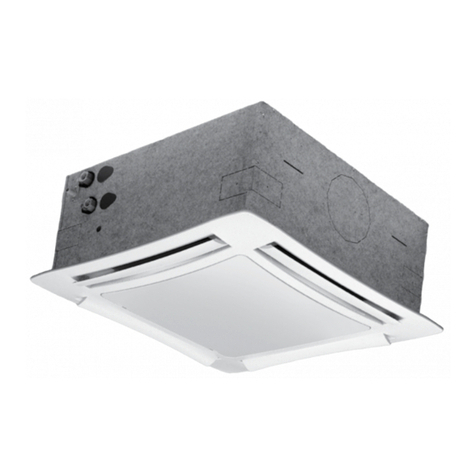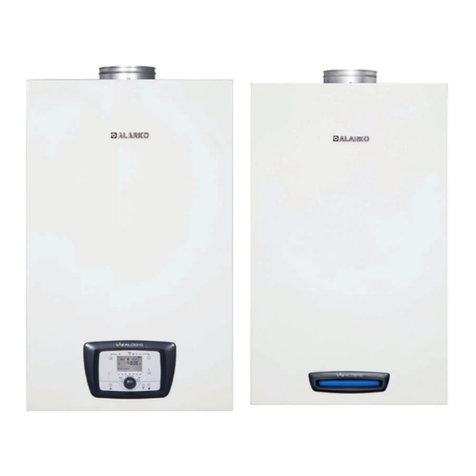
CONTENTS
1 - SAFETY CONSIDERATIONS .................................................................................................................................... 3
1.1 - General .................................................................................................................................................................. .3
1.2 - Applications ........................................................................................................................................................... .3
1.3 - Instruction types ..................................................................................................................................................... .3
1.4 - Disposal of parts/materials ..................................................................................................................................... .5
2 - TRANSPORT AND LIFTING INSTRUCTIONS.......................................................................................................... 5
2.1 - General .................................................................................................................................................................. .5
2.2 - Transport and storage ............................................................................................................................................ .5
2.3 - Offloading and hoisting ........................................................................................................................................... .5
2.4 - Horizontal transport ................................................................................................................................................ .6
2.5 - Storage .................................................................................................................................................................. .6
2.6 - Warranty ................................................................................................................................................................ .6
2
2.7 - Placement ............................................................................................................................................................... 6
2.8 - Schematic diagram of an air handling unit ............................................................................................................... 6
3 - CHECKLIST OF START-UP CHECK POINTS .......................................................................................................... 9
3.1 - Checklist of start-up check points .......................................................................................................................... .9
4 - START-UP INSTRUCTIONS ................................................................................................................................... 10
4.1 - Casing ................................................................................................................................................................. .10
4.2 - Dampers .............................................................................................................................................................. .12
4.3 - Air filters ............................................................................................................................................................... .13
4.4 - Heaters ................................................................................................................................................................ .13
4.5 - Coolers ................................................................................................................................................................ .14
4.6 - DX Coils ............................................................................................................................................................... .15
4.7 - Heat recovery wheel ............................................................................................................................................. .15
4.8 - Plate heat exchanger ............................................................................................................................................ .16
4.9 - Recirculation damper ........................................................................................................................................... .16
4.10 - Fan .................................................................................................................................................................... .16
4.11 - Silencers ........................................................................................................................................................... .19
4.12 - Lighting .............................................................................................................................................................. .19
4.13 - Control panel ..................................................................................................................................................... .20
4.14 - Installation of external sensors included ............................................................................................................. .21
4.15 - Sensor Replecament ......................................................................................................................................... .22
5 - MAINTENANCE CHECKLIST ................................................................................................................................. 23
5.1 - Checklist of check points and maintenance intervals ............................................................................................ .23
6 - MAINTENANCE AND OPERATING INSTRUCTIONS ............................................................................................ 23
6.1 - General ................................................................................................................................................................ .24
6.2 - Casing panels ...................................................................................................................................................... .24
6.3 - Doors and access covers ..................................................................................................................................... .24
6.4 - Flexible connections ............................................................................................................................................. .24
6.5 - Earthing ............................................................................................................................................................... .24
6.6 - Dampers .............................................................................................................................................................. .24
6.7 - Outside air intake ................................................................................................................................................. .24
6.8 - Filters ................................................................................................................................................................... .24
6.9 - Heaters ................................................................................................................................................................ .24
6.10 - Coolers .............................................................................................................................................................. .25
6.11 - Heat recovery wheel ........................................................................................................................................... .25
6.12 - Plate heat exchanger .......................................................................................................................................... .26
6.13 - Recirculation damper ......................................................................................................................................... .26
6.14 - Fan .................................................................................................................................................................... .26
6.15 - Silencers ............................................................................................................................................................ .27
6.16 - Control ............................................................................................................................................................... .27
7 - OPEN AND CLOSED INSTRUCTIONS .................................................................................................................. 28
Abbreviations
AHU - Air handling unit
PED - Pressure Equipment Directive
SUP - Supply air
ETA - Extract air
BMS - Building management system
HMI - Human machine interface
ODA - Outdoor air
EHA - Exhaust air
rh - Relative humidity
6
7





























